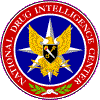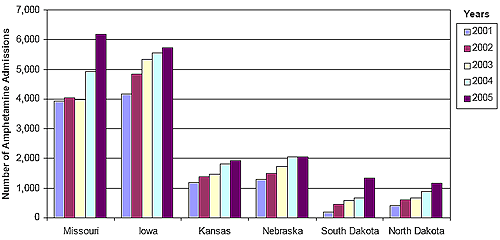
|
National
Drug Intelligence Center Midwest High Intensity Drug Trafficking Area Drug Market Analysis May 2007 OutlookMexican DTOs will increasingly control distribution of methamphetamine, powder cocaine, marijuana, and heroin in the Midwest HIDTA region. These trafficking organizations have developed elaborate transportation and distribution networks throughout much of the region and are increasing their activities in areas such as St. Louis. Many midlevel and retail distributors prefer to purchase ice methamphetamine, cocaine, and marijuana from Mexican wholesalers and midlevel dealers in Midwest HIDTA markets rather than travel to source cities in California or along the Southwest Border. The reliance of retail distributors on Mexican wholesale suppliers will continue to strengthen control by the wholesalers over the primary and secondary markets in the HIDTA region. These Mexican DTOs will very likely use the Midwest HIDTA region as a staging area for cocaine, methamphetamine, and marijuana as they continue to expand their areas of operation eastward. Mexican ice methamphetamine distribution will increase in the Midwest HIDTA region, burdening already taxed law enforcement agencies, public health departments, treatment centers, and social services agencies. Mexican ice methamphetamine will remain the dominant form of the drug. Local methamphetamine production will continue, but at significantly reduced levels from previous years. Local methamphetamine producers will continue to purchase pseudoephedrine in quantities less than threshold amounts at several locations throughout the region until they acquire enough to manufacture a supply of methamphetamine, unless the Midwest states create centralized databases to track pseudoephedrine purchases. Further, methamphetamine producers will increasingly attempt to extract pseudoephedrine from liquid or gelatin capsules and search for alternative means of obtaining sufficient precursor chemicals. Demand for powder cocaine will most likely increase throughout the HIDTA region but will not eclipse demand for crack cocaine. To this end, law enforcement and public health officials in several jurisdictions report increasing powder cocaine abuse among teenagers and young adults. Additionally, law enforcement officials report that crack cocaine distributors are increasingly converting powder cocaine to crack at or near distribution sites in an attempt to avoid law enforcement detection and the harsher penalties that are often associated with the trafficking of crack cocaine. Consequently, their demand for wholesale quantities of powder cocaine in the region is increasing. To meet the demand, Mexican wholesale distributors might be able to supply additional quantities of the drug through their vast transportation networks. Hispanic street gangs will increase their presence in many market areas, such as Des Moines, Omaha, and the Kansas City metropolitan area. The increasing Hispanic population in the Midwest HIDTA region will provide new recruits for Hispanic street gangs already active in the region. Rising methamphetamine distribution in the HIDTA region will lead to increased incidents of violent and property crimes. African American and Hispanic street gangs rely on drug revenue, including that generated by the sale of methamphetamine, to support their activities, and they resort to violence to protect their businesses. This will contribute to increased violence in the Midwest HIDTA region as these gangs compete for customers and drug territory as well as avenge personal and gang rivalries.
|

